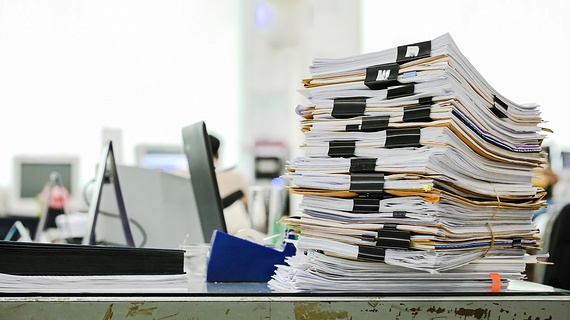
An essential part of a legionella control plan is record-keeping - not just because it’s a legal requirement if you have more than five employees, but because it allows you to keep track of your legionella risk assessments and control work, and ensure the right activities are carried out at the right time.
However, not all record-keeping systems are created equal, and some may be causing more hindrance than they are helping. Here are three signs that may mean it’s time for improvement.
1. It takes too long to update records
Legionella control can involve the execution of many tasks and activities. There’s water sampling, temperature regulation, disinfection, flushing and cleaning - just to name a few. With so many moving parts to track, a record system that is time-consuming to review and update is only going to cause confusion and frustration to staff members. This is especially true if you have a large building where many checks are being carried out at different times.
Instead, you should implement an online record system that you can update on the fly so that everyone involved knows exactly what type of work has been carried out and when.
2. Remote access is difficult…
… Or worse, it’s impossible. If you’re responsible for multiple buildings, such as a hotel chain or care home group, you’ll want to see legionella records for all of your premises without having to travel or chase on-site staff for reports.
This is easy to achieve with a centralised, online system. It means that even if you’re off-site, you won’t have an issue tracking the results of your legionella control efforts and giving you that peace of mind that everything is running as it should be.
3. There are multiple versions of events
Arguably, the only thing worse than not having access to your record system is having to deal with disorganised, conflicting data. When legionella risk assessments and follow-up actions are recorded, they should be done so in one place to ensure that there is a single version of the truth at all times.
You don’t want to carry out a lengthy, complex piece of work that requires time, money and effort only to find out that it was already done last week. Or worse, miss out an integral part of your control plan due to the disorganisation of the system - putting your staff and residents at risk of legionella.
4. The risk of data loss is high
The HSE requires you to keep your records for at least two years after they remain current. One of the main issues with paper-based or locally-stored record-keeping systems is that the risk of things getting lost or becoming corrupt is high. All it takes is a freak fire, flood or hard-drive crash, for example. Your system should be solid and reliable.
The best way to avoid these pains is to move over to an online, centralised record-keeping system that is easy to implement, dependable and fast. An organised system will be the backbone of your legionella control plan, and it will aid you in keeping your staff and residents safe.
To learn more about how you can control legionella effectively, download our free guide for facilities managers.








